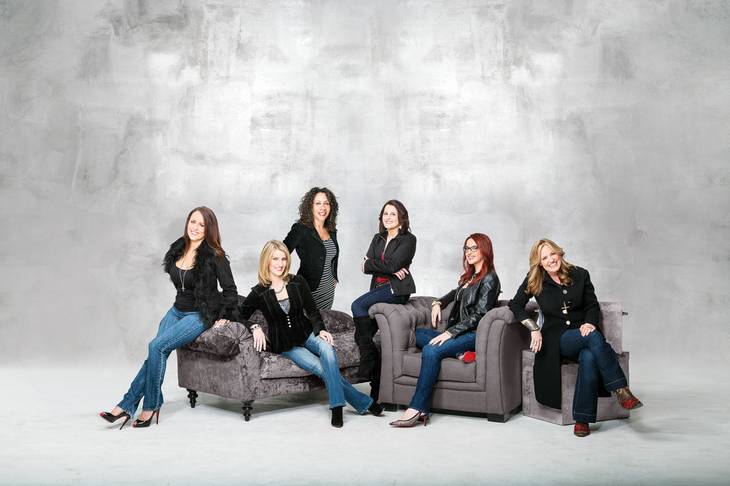When Missy Young, now an executive vice president at Las Vegas data company Switch, was 12, she remembers her mother “banging her head against the glass ceiling” as the only female vice president at a bank.
She was paid $50,000 per year less than her male colleagues.
“That’s not fair,” Young told her mother at the time. “You should make a lot of noise about it.”
“That’s the way things are,” her mother responded.
Young, now 44, works in technology, an industry dominated by men. While women make up 59 percent of the U.S. labor force, women hold only about 22 percent of leadership positions in the country’s top tech companies, according to company diversity reports.
That’s not the case at Switch, where half of the company’s 14 top executives are women. Several hold high-level technical positions, including having chief responsibility for construction and engineering.
“I’d say we’re a little odd,” said Kristi Overgaard, Switch’s vice president of marketing.
Although the company declined to disclose statistics for companywide gender distribution in technical versus nontechnical jobs, a boardroom with gender parity is rare, even outside of tech.
The three Switch executives interviewed for this story said credit for the company’s balance among its highest-ranking executives belongs to the company’s CEO rather than any official initiative to promote gender equity.
Overgaard said by prioritizing talent and creating a meritocratic work environment, Switch founder Rob Roy created a company culture in which gender is irrelevant.
Roy “doesn’t walk through life going, ‘Are they male or female?’ ” Overgaard said. “He walks through life looking for, or seeing, innate talent. ‘Can this person problem solve? Can this person lead? Can this person communicate? Can they get results?’ ”
Experts say tech’s gender problems stem from a web of factors, including — but hardly limited to — workplace environment. The industrywide imbalance begins much earlier, with education and perception of what constitutes appropriate work for women.
But culture can make a difference, said Joan Williams, author of “What Works for Women at Work” and director of the Center for WorkLife Law at the University of California, Hastings College of the Law.
“It depends, from firm to firm, but in computer science (the gap is) a combination of a dearth of applicants and a hostile environment for women, which leads to a higher level of attrition,” Williams said.
At Switch, Young is in charge of sales and works closely with other firms. She got her first job in tech during the dot-com boom in the 1990s and has seen firsthand how gender bias can run rampant in environments that allow it. Her first boss, a woman, wanted to give other women a chance to break into the industry.
“She was replaced by a man who thought I had no business in technology,” Young said.
The gender gap develops as early as high school. The 2015 U.S. News/Raytheon STEM Index found large disparities in the interests of high school students based on their genders. Thirty-one percent of high school boys said they were interested in engineering, compared with 3 percent of girls. Fifteen percent of high school boys reported interest in technology, compared with 2 percent of girls.
Overgaard, who holds the playful title of executive vice president of awesomeness, said the industrywide gender gap has persisted in large part as the result of a “historic groove line” that for many years did not encourage women to pursue education or employment in STEM fields.
That was obvious in nearly every technology class Switch executive Lesley McVay attended at the University of California, Riverside, where she earned a minor in computer science.
“They were certainly much more male dominated,” she said.
McVay, who has two female team members and oversees the company’s facilities, echoed the sentiment that Roy, the company’s CEO and founder, has been able to correct that at Switch.
“We are able to find women who are really able to stand up and perform in the roles they are given,” McVay said. “I think he really trusts us.”
Still, executives at Switch can’t shield themselves from the larger industry.
“Even now, I walk into meetings with clients and I’m the only woman in the room,” Young said.
Overgaard, who mentors several students, recalled meeting an eighth-grader who was being taught code. She was so good, Overgaard said, she almost was ready to be hired.
“When you have a coding mindset, you’re a rock star,” Overgaard said. “You can start tomorrow.”
